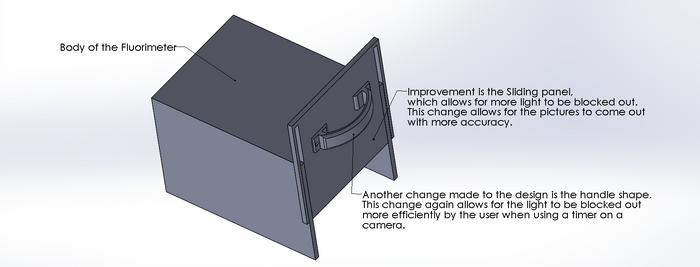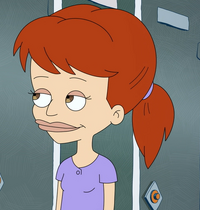BME100 f2018:Group5 T1030 L6
OUR TEAM
Sliders, LLC.
Lab 6 Write-Up
Bayesian Statistics
Overview of the Original Diagnosis System
34 patients were diagnosed by 17 teams of about 6 students. Each team tested and identified 2 samples representing two patients. Furthermore, a negative and positive control was implemented in team team to aid in identification. To increase accuracy of the results 3 replicas of DNA from each patients were used and thus 3 pictures were utilized. 5 differing samples of concentration to ensuring clear visuals. Of 30 results the class determined 11 to be positive, 16 to be negative and 3 to be inconclusive. When a doctor diagnosed the same patients they found 10 to be positive and 20 to be negative. When comparing the class data to that of a skill physician it is evident that not all samples were accurately diagnosed. The class correctly labeled 15 of the 30 results. Such and inaccuracy can be accredited to the lack of experience and ability by the students. However, despite being in a new environment the class generally was still able to work well as a team and complete the activity in a timely manner.
Calculation 1: What is the probability that a patient will get a positive final test conclusion, given a positive PCR reaction?
| Variable | Description | Numerical Value |
| A | Positive Final Test Conclusion | 0.44 |
| B | Positive PCR Reaction | 0.42 |
| P(B|A) | Probability that given a positive PCR reaction, you will get a positive final test conclusion | 0.900 |
| P(A|B) | Probability that given a positive final test conclusion, you will get a positive PCR reaction | 0.94 |
Calculation 2: What is the probability that a patient will get a negative final test conclusion, given a negative diagnostic signal?
| Variable | Description | Numerical Value |
| A | Negative Final Test Conclusion | 0.53 |
| B | Negative Diagnostic Signal | 0.51 |
| P(B|A) | Probability that given a negative diagnostic signal, you will get a negative final test conclusion | 0.94 |
| P(A|B) | Probability that given a negative final test conclusion, you will get a negative diagnostic signal | 0.98 |
Calculation 3: What is the probability that a patient will develop the disease, given a positive final test conclusion?
| Variable | Description | Numerical Value |
| A | Patient will develop the disease | 0.34 |
| B | Positive Final Test Conclusion | 0.44 |
| P(B|A) | Probability that given a positive final test conclusion, the patient will develop the disease | 0.43 |
| P(A|B) | Probability that a patient will develop the disease when there is a positive final test conclusion | 0.33 |
Calculation 4: What is the probability that a patient will not develop the disease, given a negative final test conclusion?
| Variable | Description | Numerical Value |
| A | Patient will not develop the disease | 0.66 |
| B | Negative Final Test Conclusion | 0.53 |
| P(B|A) | Probability that given a negative final test conclusion, a patient will not develop the disease | 0.77 |
| P(A|B) | Probability that a patient will not develop the disease | 0.96 |
Which calculation describes the sensitivity of the system regarding the ability to detect the disease SNP? Calculation 1
Which calculation describes the sensitivity of the system regarding the ability to predict the disease? Calculation 3
Which calculation describes the specificity of the system regarding the ability to detect the disease SNP ? Calculation 2
Which calculation describes the specificity of the system regarding the ability to predict the disease ? Calculation 4
What Bayes Statistics Imply about This Diagnostic Approach
Some sources of error included:
- Not all the light was omitted from the fluorimeter
- Human Error/ Procedural Error
- Error associated with the measuring instruments (calibration issues)
Computer-Aided Design
3D Modeling
To complete the computer-aided design portion of this lab, we used SOLIDWORKS to create a 3D model of our modified fluorimeter. To create this model, the system was broken down into three different parts, which were then assembled using basic mates. Although SOLIDWORKS is not a perfect software, this was a pretty straightforward process. Everyone in the group has had some experience with SOLIDWORKS, but only one group member was tasked with creating the model. They completed the task in roughly 2 hours.
Our Design
 |
We decided to change the closing mechanism for the fluorimeter because it was one of the parts of lab the lab that we found high problematic but easily fixed. Given the work area, the original closing method was very ineffective and awkward. As a result, some of the pictures taken with the camera timer were not the best because they were not taken in a perfectly dark system. This potentially decreased the accuracy of the results we obtained from those photos. To remedy this, we changed the closing system from a flap to a sliding door. This minimizes the amount of light in the system and this action can be done quickly enough that the timer would go off after the system is closed. Since both problems were addressed and corrected, our system is a major improvement compared to the original.
Feature 1: Reagents & Supplies
| Consumables: plastics, pipettor, and reagents(PCR mix,primers) | The OpenPCR machine and software | The Fluorimeter system (including slides, stand, etc.) |
| Strength:
-materials are inexpensive Weakness: -weak -requires some training |
Strength:
-PCR reaction is done entirely by the machine Weakness: -takes two hours to run the PCR reaction |
Strength:
-instructions are simple -only need a phone to capture an image Weakness: -the stand is too short -slides are not marked with the appropriate side -door is clumsy and not easy to close |
Feature 2: Hardware- PCR Machine & Fluorimeter
| Hardware: Fluorimeter ‐ how will you redesign the Fluorimeter system to improve the major weakness you
described? |
| Notes: We are adding a sliding door to the front of the light box to make it easier to open and close when we are capturing images of the mixture on the slide |




